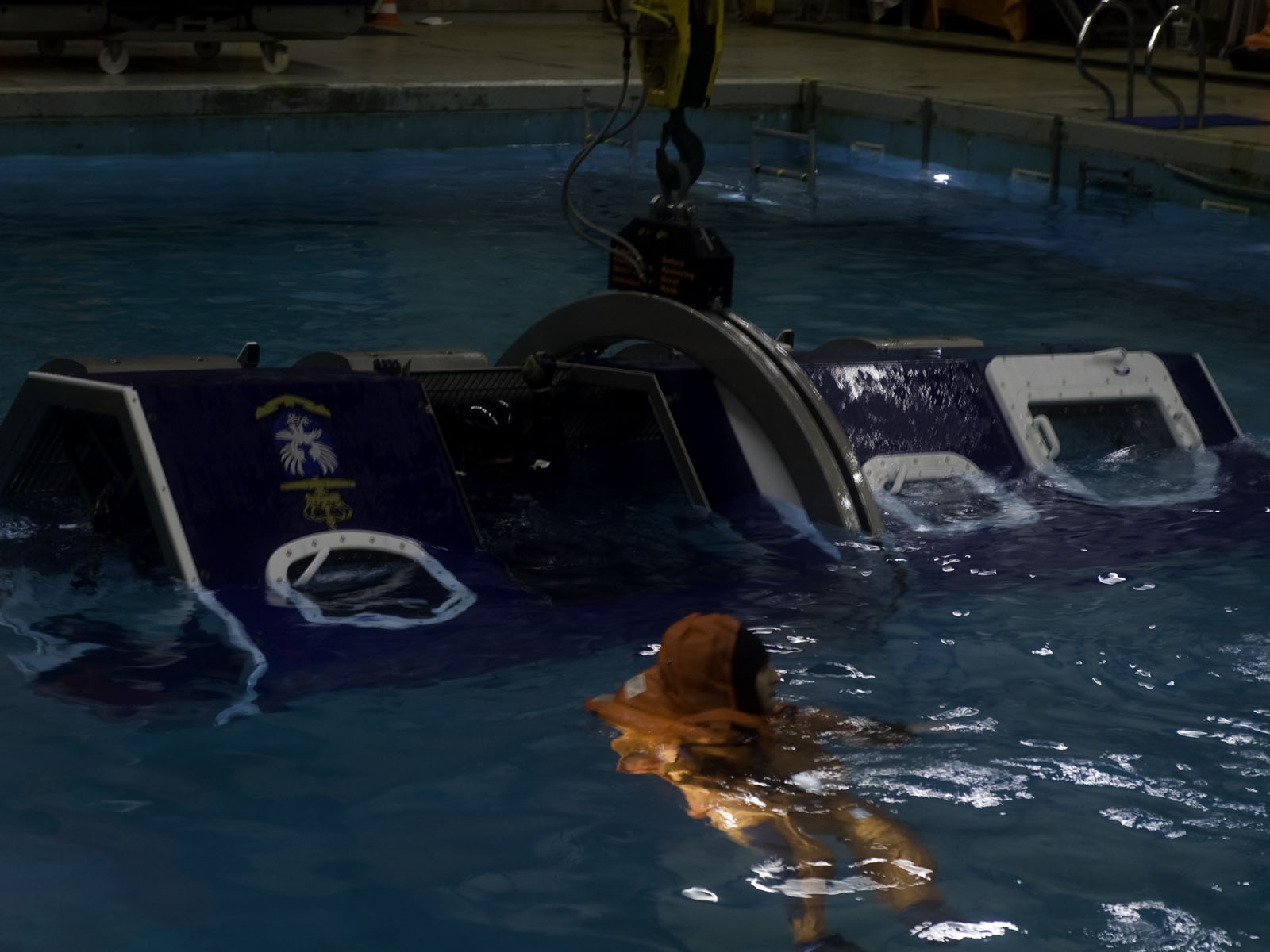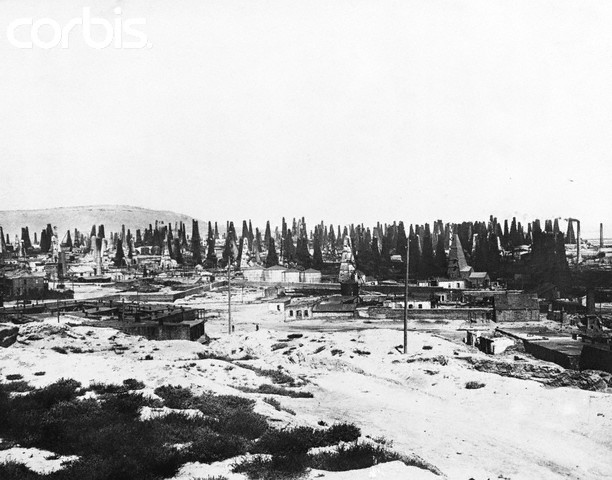|
BOSIET
BOSIET stands for basic offshore safety induction and emergency training, a course created to assist in meeting the initial offshore safety training, emergency response training and Risk assessment, assessment requirements for personnel new to the Offshore drilling, offshore, oil and gas industry, oil and gas and offshore wind, renewable energy industries. Included in the course is helicopter survival, emergency first aid, sea survival, fire fighting, self rescue and Totally Enclosed Motor Propelled Survival Craft TEMPSC (lifeboat) training. The helicopter survival training (HUET) is often the hardest part. Upon completion of the program, the delegate will have an awareness of the generic hazards and associated risks encountered when working on offshore installations and the generic safety regimes and safety management systems in place to control and mitigate risks associated with hazards. References [Baidu] |
HUET
Helicopter Underwater Escape Training (also known as Helicopter Underwater Egress Training ); often abbreviated as HUET, pronounced ''hue-wet'', ''hue-way'' or ''you-way'') is training provided to helicopter flight crews, offshore oil and gas industry, law enforcement personnel, and military personnel who are regularly transported by helicopters over water. As the name implies, the purpose of this training is to prepare passengers and crew for an emergency evacuation or egress in the event of a crash landing on water. Overview Typical HUET programs involve both a theoretical and practical component. The theoretical component provides personnel with information related to previous ditching events, the hazards of helicopter operations (e.g., main and tail rotors, engine exhausts, and external antenna locations), the available safety equipment carried on board the helicopter (external floatation devices, emergency egress lighting, crash attenuating seats) as well as personal protecti ... [...More Info...] [...Related Items...] OR: [Wikipedia] [Google] [Baidu] |
Safety Training
Occupational safety and health (OSH), also commonly referred to as occupational health and safety (OHS), occupational health, or occupational safety, is a multidisciplinary field concerned with the safety, health, and welfare of people at work (i.e. in an occupation). These terms also refer to the goals of this field, so their use in the sense of this article was originally an abbreviation of ''occupational safety and health program/department'' etc. The goal of an occupational safety and health program is to foster a safe and healthy occupational environment. OSH also protects all the general public who may be affected by the occupational environment.Fanning, Fred E. (2003). Basic Safety Administration: A Handbook for the New Safety Specialist, Chicago: American Society of Safety Engineers Globally, more than 2.78 million people die annually as a result of workplace-related accidents or diseases, corresponding to one death every fifteen seconds. There are an additional 374 m ... [...More Info...] [...Related Items...] OR: [Wikipedia] [Google] [Baidu] |
Emergency Response
Emergency services and rescue services are organizations that ensure public safety and health by addressing and resolving different emergencies. Some of these agencies exist solely for addressing certain types of emergencies, while others deal with ad hoc emergencies as part of their normal responsibilities. Many of these agencies engage in community awareness and prevention programs to help the public avoid, detect, and report emergencies effectively. Emergency services are often considered first responders. Emergency services have one or more dedicated emergency telephone numbers reserved for critical emergency calls. In many countries, one number is used for all of the emergency services (e.g. 911 in the Americas, 999 in the United Kingdom, 112 in continental Europe, 000 in Australia). In some countries, each emergency service has its own emergency number (e.g. 110 for police, 118 for coast guard, 119 for fire and medical in Japan; 110 for police, 119 for fire, 120 for medica ... [...More Info...] [...Related Items...] OR: [Wikipedia] [Google] [Baidu] |
Risk Assessment
Broadly speaking, a risk assessment is the combined effort of: # identifying and analyzing potential (future) events that may negatively impact individuals, assets, and/or the environment (i.e. hazard analysis); and # making judgments "on the tolerability of the risk on the basis of a risk analysis" while considering influencing factors (i.e. risk evaluation). Put in simpler terms, a risk assessment determines possible mishaps, their likelihood and consequences, and the tolerances for such events. The results of this process may be expressed in a quantitative or qualitative fashion. Risk assessment is an inherent part of a broader risk management strategy to help reduce any potential risk-related consequences. Need Individual risk assessment Risk assessment are done in individual cases, including patient and physician interactions. Individual judgements or assessments of risk may be affected by psychological, ideological, religious or otherwise subjective factors, which impa ... [...More Info...] [...Related Items...] OR: [Wikipedia] [Google] [Baidu] |
Offshore Drilling
Offshore drilling is a mechanical process where a wellbore is drilled below the seabed. It is typically carried out in order to explore for and subsequently extract petroleum that lies in rock formations beneath the seabed. Most commonly, the term is used to describe drilling activities on the continental shelf, though the term can also be applied to drilling in lakes, inshore waters and inland seas. Offshore drilling presents environmental challenges, both offshore and onshore from the produced hydrocarbons and the materials used during the drilling operation. Controversies include the ongoing US offshore drilling debate. There are many different types of facilities from which offshore drilling operations take place. These include bottom founded drilling rigs ( jackup barges and swamp barges), combined drilling and production facilities either bottom founded or floating platforms, and deepwater mobile offshore drilling units (MODU) including semi-submersibles or drillships. The ... [...More Info...] [...Related Items...] OR: [Wikipedia] [Google] [Baidu] |
Oil And Gas Industry
The petroleum industry, also known as the oil industry or the oil patch, includes the global processes of exploration, extraction, refining, transportation (often by oil tankers and pipelines), and marketing of petroleum products. The largest volume products of the industry are fuel oil and gasoline (petrol). Petroleum is also the raw material for many chemical products, including pharmaceuticals, solvents, fertilizers, pesticides, synthetic fragrances, and plastics. The industry is usually divided into three major components: upstream, midstream, and downstream. Upstream regards exploration and extraction of crude oil, midstream encompasses transportation and storage of crude, and downstream concerns refining crude oil into various end products. Petroleum is vital to many industries, and is necessary for the maintenance of industrial civilization in its current configuration, making it a critical concern for many nations. Oil accounts for a large percentage of the world’ ... [...More Info...] [...Related Items...] OR: [Wikipedia] [Google] [Baidu] |
Offshore Wind
Offshore wind power or offshore wind energy is the generation of electricity through wind farms in bodies of water, usually at sea. There are higher wind speeds offshore than on land, so offshore farms generate more electricity per amount of capacity installed.Madsen & KrogsgaardOffshore Wind Power 2010 ''BTM Consult'', 22 November 2010. Retrieved: 22 November 2010. Offshore wind farms are also less controversial than those on land, as they have less impact on people and the landscape. Unlike the typical use of the term "offshore" in the marine industry, offshore wind power includes inshore water areas such as lakes, fjords and sheltered coastal areas as well as deeper-water areas. Most offshore wind farms employ fixed-foundation wind turbines in relatively shallow water. As of 2020, floating wind turbines for deeper waters were in the early phase of development and deployment. As of 2020, the total worldwide offshore wind power nameplate capacity was 35.3 gigawatt (GW). Unite ... [...More Info...] [...Related Items...] OR: [Wikipedia] [Google] [Baidu] |
TEMPSC
TEMPSC is an acronym for "Totally Enclosed Motor Propelled Survival Craft", which was originally designed for offshore oil and gas platforms in 1968. The first-ever TEMPSC was spherical in shape, had a flat bottom, a single hook, with a total passenger capacity of 28-passengers and a fire-retardant fibreglass hull and dome. It was manufactured in Beverly Hills, California by the Brucker Life Sphere Company, owned by its creator Mr. Milton Brucker. The first TEMPSC was called the Brucker Life Sphere, but was later referenced as a "Totally Enclosed, Motor Propelled Survival Capsule". The United States Coast Guard coined the acronym "TEMPSC" during the process of evaluating the Brucker Life Sphere for approval and adherence to SOLAS 1960. At that time, TEMPSCs did not exist and the IMO SOLAS description of a lifeboat was that of an open dual hook lifeboat that were only installed onboard ships. The USCG's approval of the Brucker Life Sphere formalized the acronym to TEMPSC (Totally ... [...More Info...] [...Related Items...] OR: [Wikipedia] [Google] [Baidu] |
Footnotes
A note is a string of text placed at the bottom of a page in a book or document or at the end of a chapter, volume, or the whole text. The note can provide an author's comments on the main text or citations of a reference work in support of the text. Footnotes are notes at the foot of the page while endnotes are collected under a separate heading at the end of a chapter, volume, or entire work. Unlike footnotes, endnotes have the advantage of not affecting the layout of the main text, but may cause inconvenience to readers who have to move back and forth between the main text and the endnotes. In some editions of the Bible, notes are placed in a narrow column in the middle of each page between two columns of biblical text. Numbering and symbols In English, a footnote or endnote is normally flagged by a superscripted number immediately following that portion of the text the note references, each such footnote being numbered sequentially. Occasionally, a number between brack ... [...More Info...] [...Related Items...] OR: [Wikipedia] [Google] [Baidu] |
Emergency Services In The Republic Of Ireland
An emergency is an urgent, unexpected, and usually dangerous situation that poses an immediate risk to health, life, property, or environment and requires immediate action. Most emergencies require urgent intervention to prevent a worsening of the situation, although in some situations, mitigation may not be possible and agencies may only be able to offer palliative care for the aftermath. While some emergencies are self-evident (such as a natural disaster that threatens many lives), many smaller incidents require that an observer (or affected party) decide whether it qualifies as an emergency. The precise definition of an emergency, the agencies involved and the procedures used, vary by jurisdiction, and this is usually set by the government, whose agencies (emergency services) are responsible for emergency planning and management. Defining an emergency An incident, to be an emergency, conforms to one or more of the following, if it: * Poses an immediate threat to life, hea ... [...More Info...] [...Related Items...] OR: [Wikipedia] [Google] [Baidu] |
Petroleum Production
The petroleum industry, also known as the oil industry or the oil patch, includes the global processes of exploration, extraction, refining, transportation (often by oil tankers and pipelines), and marketing of petroleum products. The largest volume products of the industry are fuel oil and gasoline (petrol). Petroleum is also the raw material for many chemical products, including pharmaceuticals, solvents, fertilizers, pesticides, synthetic fragrances, and plastics. The industry is usually divided into three major components: upstream, midstream, and downstream. Upstream regards exploration and extraction of crude oil, midstream encompasses transportation and storage of crude, and downstream concerns refining crude oil into various end products. Petroleum is vital to many industries, and is necessary for the maintenance of industrial civilization in its current configuration, making it a critical concern for many nations. Oil accounts for a large percentage of the world’ ... [...More Info...] [...Related Items...] OR: [Wikipedia] [Google] [Baidu] |




